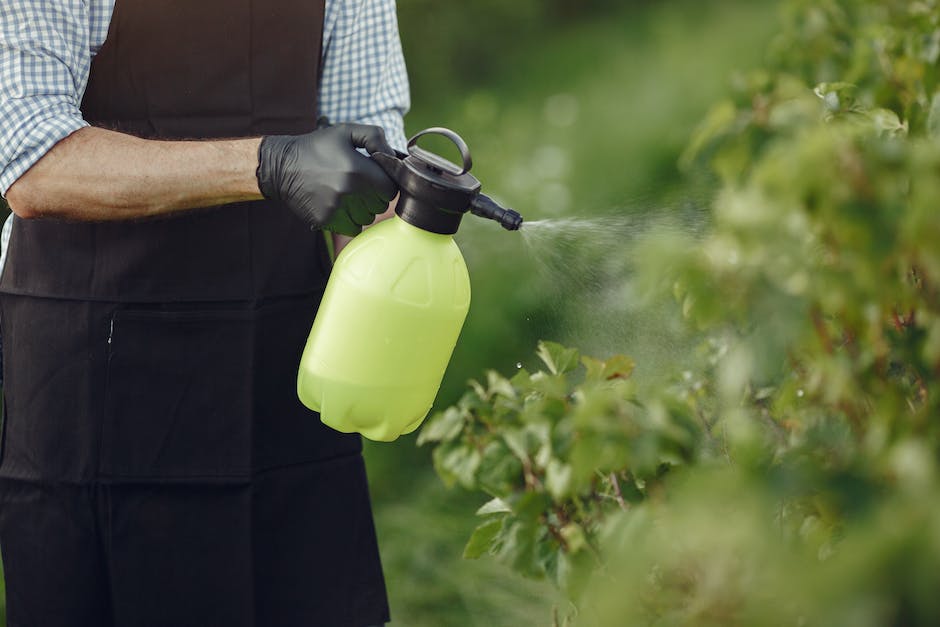How to Straighten a Leaning Tree: Practical Steps

Most people appreciate the serenity and shade trees provide within their environment. However, when a tree starts leaning, it not only ruins the aesthetics but also raises safety concerns. This guide enlightens everyday individuals on how to sustainably align and upright a leaning tree – an issue that homeowners and public facilities may face. Firstly, it’s critical to comprehend the basic anatomy of a tree to appreciate how its root system, trunk, and branches operate and interact. Secondly, understanding different cable and bracing methodologies will equip you with knowledge on how to stabilize and straighten a leaning tree. Furthermore, comprehensive post-treatment care information equips you with necessary skills to ensure the prolonged wellbeing of the tree.
Understanding Basic Tree Anatomy
Cracking the Code: Understanding a Tree’s Anatomy Determines its Lean
There’s nothing quite like observing the awe-inspiring natural architecture of tree formation: tall, majestic, sometimes leaning a little here and there, or a notch too steep. But what makes a tree lean? The answer lies deep within its incredible anatomy. Let’s break it down, component by component.
Firstly, let’s dive deep into the root systems. Incredibly crucial, the roots not only anchor trees into the ground but also absorb nutrients and water. Just like a well-designed architecture needs solid foundations, so too trees rely heavily on their roots for strength and stability. Shallow root systems or those that are damaged may lead to the tree leaning, hence making it vulnerable to toppling over.
Next on the list, the trunk or the bole. It’s no oaken lore that the trunk forms the tree’s primary support system. A strong, sturdy trunk fosters a resilient vertical posture. However, if a tree develops a lean, it’s often due to a weakened trunk or a warp in its growth pattern. In such cases, the tree’s rigidity falters, causing it to lean towards one direction.
Now, let’s take a good look at the tree’s crown – the lush, leafy part that draws the eye. The crown’s size, weight, and distribution determine the tree’s overall balance. A heavier crown or one concentrated on one side could make the tree lean in that particular direction.
Let us not forget the tree bark – silent shields draped around trees for protection. Cracks, crevices, or cankers in the bark can instigate a lean. Damage to the bark could undermine a tree’s structural integrity, causing a lean.
Brace yourselves because the ultimate game-changer is about to come. While the aforementioned components influence the tree’s leaning significantly, certain external factors can exponentially escalate this tendency. Factors like wind exposure, soil erosion, slope angles, and disturbances occurring at any lifecycle stage can stress the tree, applying pressure or creating leaning propensity.
Finally, it’s essential to consider the tree species, as genetics can also contribute to the tree’s direction of growth. Some trees, like the famous Leaning Pine of Pisa, have a natural propensity to lean.
There you have it. The fascinating mix of internal architectures and external influences determining a tree’s lean. A combination of the roots, trunk, crown, bark, and external stress factors, coupled with the tree’s inherent genetics – all joining forces to create these leaning wonders of nature. Understanding this, no longer will each leaning tree be just another tilted landmark, it will be an openbook of botanical marvel waiting to be understood!

Photo by edwardhowellphotography on Unsplash
Cable and Bracing Techniques
Mastering Cable and Bracing Techniques for Straightening Your Tree
Trees are commanding figures in our landscapes – strong and serene until, quite alarmingly, they begin to lean. Despite the multitude of contributing factors discussed earlier, good news awaits the dedicated arborists among us. With knowledge of effective cabling and bracing techniques, it’s possible to counteract these forces and help our standing giants regain their posture.
Starting with cabling, this technique requires strategic positioning at about 2/3 of the tree’s height. Cabling involves anchoring a flexible cable between two limbs or between the trunk and a limb, creating a sturdy force that offers added support. Choosing the right cable size is vital. It should correspond to the tree’s size, weight, and the degree of its lean. Stainless steel cables are often best as they provide durability and strength while resisting rust.
To cable, start by drilling a hole through the trunk or branches, always ensuring the tree’s health by disinfecting tools before use. Insert an eyebolt through the drilled hole and fasten it with a nut. Fasten the chosen cable to the eyebolt at one end, stretch it to the other anchor point, cut it to length, and fasten on the other side too. An important consideration when tightening the cable is to retain some slack, thus allowing for tree movement and growth.
Bracing, on the other hand, is advisable for trees with split trunks or branches. Specifically designed brace rods are essential for this practice. Like cabling, the bracing technique involves drilling holes, but this time strictly through the trunk. Position the rods at right angles to the split while being sure not to damage the tree further.
Offsetting the rods enhances their effectiveness. When installing them, start low, preferably below the split, and stagger them along the trunk. The addition of these rods often works in concert with cabling and supports the tree structurally, bearing loads that the tree may otherwise struggle to distribute evenly.
Oftentimes, professionals utilize a combination of both cabling and bracing methods for the best results. Taking into account the unique needs of every tree, these techniques may be adapted and customized.
Remember, attentive maintenance after installing cables and braces is crucial. Regular inspections will ensure that these support systems are holding up, and adjustments may be necessary to accommodate tree growth over time.
With dedication, correct technique, and a practiced eye, we can stand side by side with our trees — watching them regain their strength and stature, rather than their heartbreaking decline. Restoring balance to these mighty pillars of biodiversity, we discover our own ability to make a significant, positive difference in the treescapes we love so passionately. Thus, turning the tide for our leaning friends becomes not only possible––it’s achievable.

Post-Treatment Care
Alright, green thumbs, we’re moving onward from leaning-tree diagnosis to the juicy details of tree sustainability post-straightening. We’re also going to dig a bit deeper into some super-efficient, proven techniques that guarantee our arboreal pals prosper long after we’ve corrected their posture.
One thing to consider right off the back is the health and vigor of our gentle giant. Maintaining a tree’s health post-straightening is paramount, as a strong, healthy tree will naturally heal injuries and fend off pests and diseases. Regular watering, proper feeding, and seasonal pruning are basic but crucial ingredients in the recipe for a healthy tree. Keep this consistent, and your tree will certainly stand the test of time.
When it comes to preserving that newly straightened glory, staking is a factor that we mustn’t overlook. Interestingly, staking isn’t always recommended. It can inadvertently create a dependency and limit trunk and root growth. However, in cases where we’ve had to straighten a mature or significantly leaning tree, a support stake can provide that additional anchorage while the tree adjusts to its new upright position.
Now, let’s talk soil care, a fantastic but often overlooked aspect in the post-straightening journey. Having good quality, well-drained soil can stimulate strong root growth while preventing harmful rot and disease. Continue enriching the soil with organic compost and consider covering with mulch to retain moisture and regulate temperature. Remember, happy soil leads to happy trees!
Another trick up our sleeve is crown thinning. This pruning technique can decrease wind resistance, thus reducing the strain on the tree’s structure, especially when gusts are at their strongest. This is often a job for skilled arborists, though a specially dedicated hobbyist might certainly tackle it with expert guidance.
Now, moving onto our last point – monitoring. Even after successful straightening and all the TLC, it’s essential to regularly check up on our upright friend. Look for signs of stress or damage such as loss of leaves, yellow leaves, insect infestation, or fungal growth. Spot these signs in time, and you’ll drastically reduce the chances of a relapse.
So there you have it, folks! Even though surgery is concluded, keep nurturing. The coexistence of trees and humans significantly adds to the beauty and balance of our planet. Our ongoing attention will ensure that these majestic creatures continue to thrive, adding unending charm to our landscapes. Happy Hobbying, tree enthusiasts!

Indeed, rectifying a leaning tree is not as daunting as it may seem, and understanding tree anatomy, application of braces, and cables, as well as implementing proper post-treatment care practices, can assure you of a job well done. Equipped with this knowledge, you are now ready to take actionable steps towards restoring your tree to its upright form. By actively applying these methods, you contribute positively to your home’s safety, beauty, and overall tree health in your environment. Let’s make the choice to constantly strive for an understanding that promotes our natural world’s health and preservation. Therefore, your newfound wisdom is not only for rectifying a leaning tree but an added skill in maintaining the balance in our ever-changing ecosystem.



